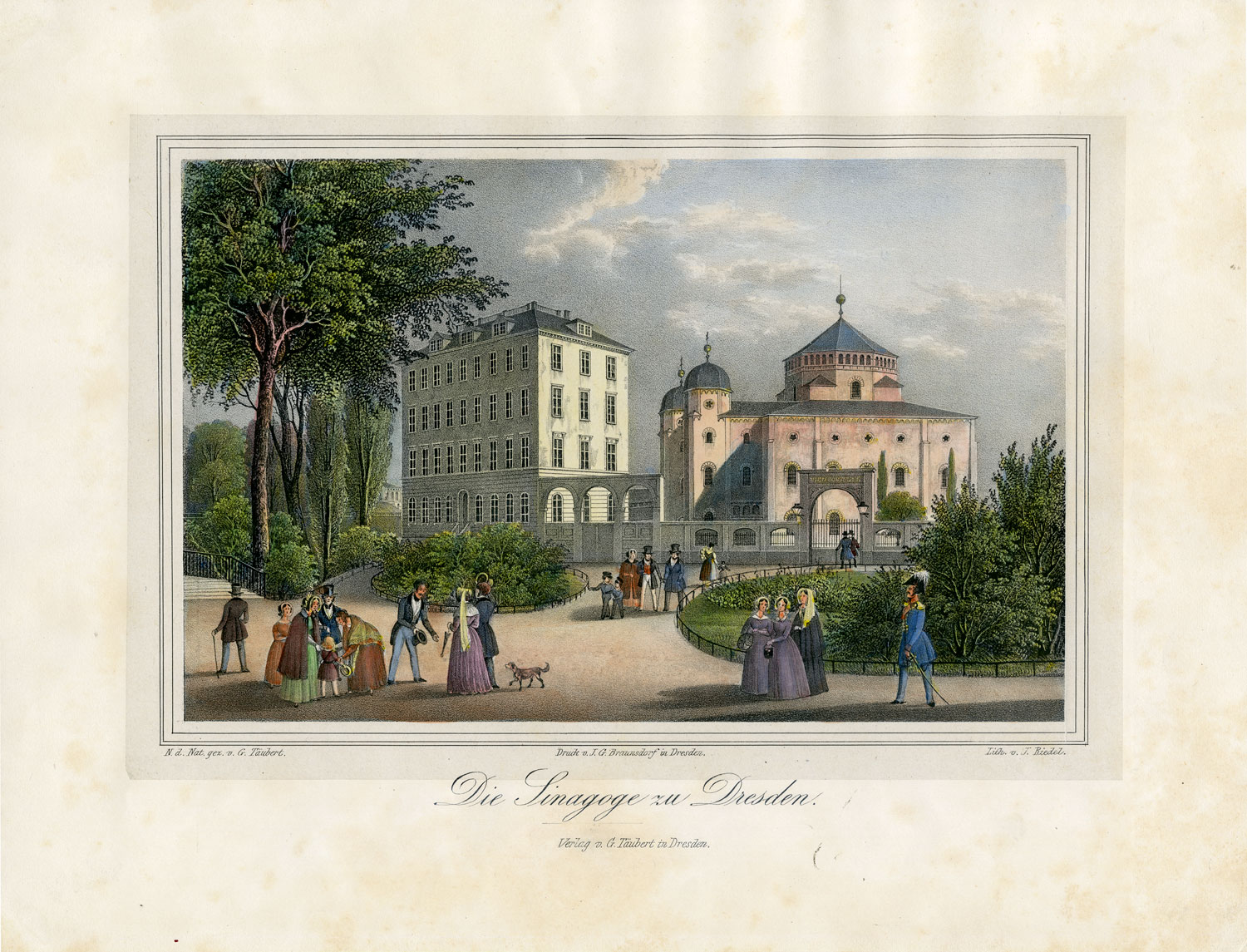This lithograph depicts the Dresden Synagogue, designed by architect Gottfried Semper (1803–1879) and built between 1838 and 1840. Unlike many other portrayals of the building, Gustav Täubert’s view makes clear that the synagogue was part of a complex including the adjacent Jewish community building, used in part as a residence for the rabbi and situated behind an elaborate gateway inscribed with the words: “My house shall be called a house of prayer for all peoples.” At the synagogue’s inauguration on May 8, 1840, Chief Rabbi Dr. Zacharias Frankel, who had pushed for legal permission to found a united Dresden congregation, described the structure in this way: “We were not driven by the desire to brag with an opulent building; rather we wanted to find an appropriate place of worship, …where we show ourselves before God in devout communion.”
That Rabbi Frankel’s goal of constructing an appropriate place of worship was realized by 1840 is somewhat remarkable. Only in 1837 were Jews in Saxony, including Dresden, granted citizenship and the right to organize religious communities, and thus the right to construct synagogues such as this one. And unlike the synagogue on the Poolstrasse in Hamburg (also included in this section), this synagogue—though entered through a gateway—is clearly sited in a public space. Fashionably dressed men, women, and children are seen here strolling in the public park adjacent to the synagogue complex, while two men in the background are looking through the iron gate at the synagogue itself. The public placement of the synagogue makes evident the gains achieved by the Jews of Dresden in the short time from 1837 to 1840.
